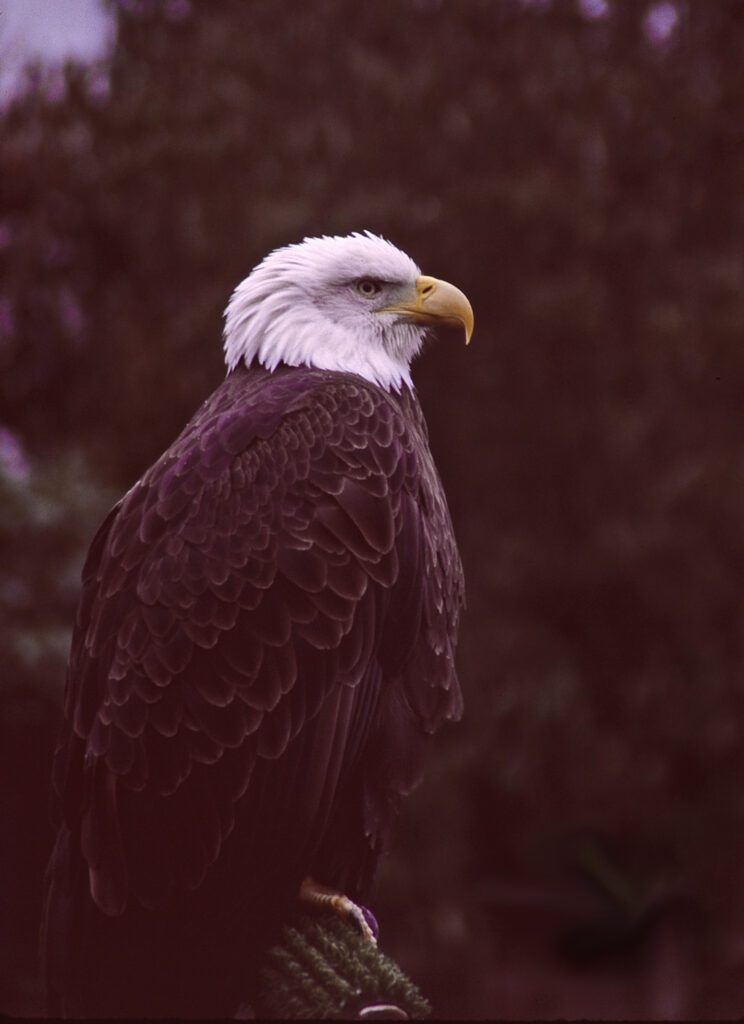
One of Washington’s most spectacular attractions is the wintering population of Bald Eagles along the Skagit River. Bald Eagles, migrating from British Columbia, Alaska and the interior Northwest, come to the Skagit to feed on spawned chum salmon. Their harsh, creaking cackle splits the air as they go about the business of hunting for their food of prey.
Opportunities abound to view or photograph our majestic national symbol as they congregate along the banks of the Skagit River, typically between December through February. Eastern Skagit County offers one of the largest wintering Bald Eagle populations in the lower 48 states. Peak counts have been estimated at more than 500 birds.
The North American colonists originally gave the Bald Eagle its name when “bald” or “balled” meant white. Bald Eagles feed mostly on fish or seabirds, though they may scavenge larger animals such as deer and even whale carrion.
For its size, the eagle is surprisingly light, yet it is very strong, strong enough to swoop down on prey with incredible speed and carry it away. Eagles’ powerful wings allow them to carry prey that weighs more than they do.
Bald Eagle nests, which can weigh hundreds of pounds, are typically six feet wide and two to four feet tall. Nests are often located very high in a tall tree with a broken or deformed top, within view of the water.
The nesting period in Washington begins around the last week of March to the first or second week of April. Although some eagles stay in the Upper Skagit River area, most find nesting sites around the shores of Puget Sound, San Juan Islands or other coastal areas in Canada or Alaska.
The average adult Bald Eagle weighs nine pounds, with a height of three feet and a wing span of five-and-a-half to seven-and-a-half feet. It is presumed that eagles mate for life. They are generally ready to mate at the age of five. Females lay two to four eggs and the 35-day incubation duties are shared by both female and male.
Eaglets are fed by their parents for the first six to seven weeks and then sporadically while they learn to feed themselves. By the time young eagles emerge from the nest they are almost as large as their parents. The familiar coloring of white head and tail, however, does not occur until the birds are four or five years of age. Juvenile birds are mostly brown and gray with mottling on the underside of their wings and a black tail with some gray.
The average life span of an eagle is up to 20 years in the wild and 40 years in captivity. The Bald Eagle was almost driven to extinction as the result of eggshell thinning caused by the pesticide DDT. DDT was banned in the 1970s and the eagles, as well as other birds of prey, have made an amazing comeback.
Someone who can see great distances is said to have “eagle eyes.” Few animals can match the eagles’ ability to see distant objects; in fact, the eagle can see tiny detail three to four times farther than humans.
Eagles can normally be observed feeding on the gravel bars of the Skagit River during the morning hours between 7 and 11 a.m. Or, later in the afternoon, you can watch the birds catch updrafts and soar overhead. At other times the birds are seen sitting on mossy tree branches along the river. This “quiet time” is an important period when the birds conserve energy. Our favorite viewing site is on State Route 20, which runs along the Skagit River, near Rockport.
The American Bald Eagle is protected by Federal law. Follow these tips for your eagle viewing pleasure and for the protection of these magnificent birds.
- Maintain a 1,000 foot distance from eagles
- Your car makes a great viewing blind
- Keep pets in your vehicle
- Move slowly, talk softly
- Never throw objects to make the eagles fly
- Use telescope, spotting scope, binoculars or a telephoto lens to see eagles “up close.”

